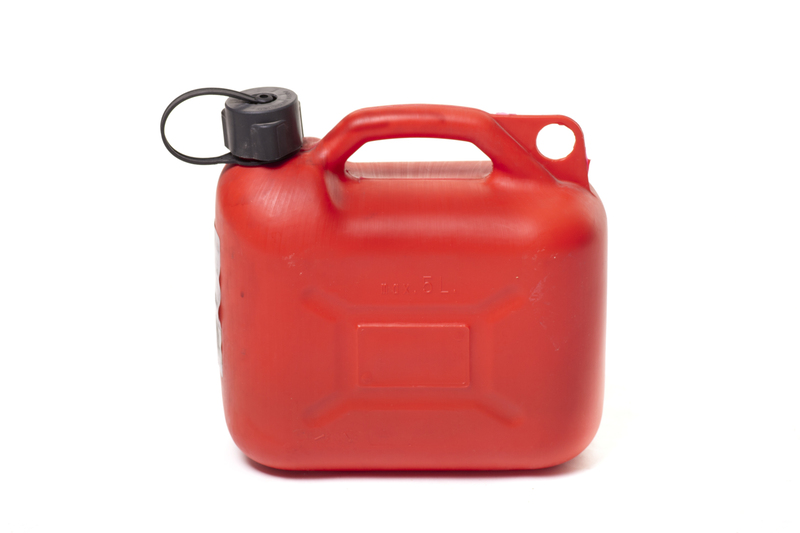
Revolutionize Your Workouts with the Principles of Kinetic Lifting
If you're searching for the next level in fitness innovation, kinetic lifting principles may be the answer. This concept is rapidly transforming the way athletes, fitness enthusiasts, and beginners approach strength training. Not only can it help maximize your gains, but it also prioritizes movement quality and injury prevention. Whether you're new to lifting or an experienced gym-goer, understanding kinetic lifting can revolutionize your workouts and set you on a faster track toward your goals.
What is Kinetic Lifting?
At its core, Kinetic Lifting is not about lifting heavier weights at any cost. Instead, it's a training methodology that emphasizes the dynamic interaction between your body, the weight, and gravity. The word "kinetic" refers to motion--making it clear that this approach is all about improving the quality of movement, rather than simply moving weight from point A to B. By harnessing momentum, body mechanics, and proper technique, kinetic lifting techniques enable you to unlock greater power, efficiency, and safety during every workout.
The Science Behind Kinetic Lifting Principles
The principles of kinetic lifting are rooted in exercise science and biomechanics. When you move any object--including weights--your body becomes a system of levers and pulleys. Proper kinetic lifting means using your body's natural mechanics to move weight more efficiently, which leads to more productive and safe workouts. Scientists have found that following kinetic lifting principles activates multiple muscle groups at once, improves force production, and even accelerates fat loss.
Kinetic Lifting vs. Traditional Weightlifting
- Traditional Weightlifting: Focuses primarily on isolating muscles; often prioritizes the amount of weight over movement quality.
- Kinetic Lifting: Emphasizes total-body integration, dynamic movement, and functional strength. The focus is on optimizing the body's natural biomechanics.
With kinetic-based lifting workouts, you don't just train to get stronger--you also build coordination, agility, and explosive power. This leads to better athletic performance and reduces the risk of common training injuries.
The Core Principles of Kinetic Lifting
To revolutionize your exercise routine with kinetic lifting, you'll want to understand and apply the following core principles:
- 1. Engage the Kinetic Chain: Every movement in the human body is interconnected through muscles, tendons, and joints--a system known as the "kinetic chain." Effective kinetic lifting utilizes the entire chain, not just isolated muscles.
- 2. Prioritize Movement Patterns: Focus on mastering fundamental movement patterns--such as the squat, hinge, push, pull, lunge, and rotate--before adding significant resistance.
- 3. Use Controlled Acceleration and Deceleration: Rather than muscling the weight, use controlled force to accelerate the load, and decelerate slowly to maintain tension and protect your joints.
- 4. Master Core Stability: A strong, stable core acts as the anchor for every kinetic movement. Apply core engagement to maintain form and transfer power efficiently.
- 5. Emphasize Quality Over Quantity: Movement integrity is more important than reps or heavy loads. Focus on precise, intentional movement during each repetition.
Benefits of Kinetic Lifting Workouts
Why should you try kinetic lifting-based workouts as part of your fitness plan? Here are the main benefits:
- Full-Body Strength and Power: By activating multiple muscle groups, kinetic lifting builds balanced, total-body strength and explosive power.
- Injury Prevention: Emphasis on biomechanics and proper form reduces stress on joints and the likelihood of overuse injuries.
- Functional Movement: Movements simulate real-life actions, translating to better performance in sports and daily activities.
- Enhanced Calorie Burn: Integrated, explosive movements increase your heart rate and energy expenditure, boosting fat loss.
- Improved Athleticism: Develops agility, balance, coordination, and speed.
Kinetic Lifting Techniques to Transform Your Fitness
To integrate kinetic lifting principles into your workout, here are foundational techniques to get you started:
- Kettlebell Swings: Utilize hip drive and core engagement to swing the kettlebell explosively, incorporating the kinetic chain.
- Medicine Ball Slams: Focus on acceleration and deceleration, driving the ball down with maximum force while maintaining control.
- Dynamic Deadlifts: Emphasize full-body tension as you lift and lower the bar with controlled force, activating the posterior chain.
- Push Presses: Integrate leg drive with shoulder pressing, transferring power from the lower to the upper body.
- Rotational Lunges: Add a torso twist to reverse lunges with a medicine ball to engage the core and improve rotational power.
How to Apply Kinetic Lifting Principles in Your Routine
Ready to revolutionize your workout with these new principles? Here's a step-by-step guide to incorporating kinetic lifting into your current regimen:
- Assess Your Movement Patterns: Begin with bodyweight exercises to identify any mobility, stability, or movement deficiencies. Correct these imbalances before adding weight.
- Add Dynamic Warm-Ups: Prepare your muscles and nervous system with full-body warm-up exercises emphasizing range of motion and activation.
- Introduce Kinetic Movements Gradually: Start with lighter resistance and focus on quality, rhythmic movement. As you progress, increase resistance and complexity.
- Monitor Technique: Use mirrors or record yourself to ensure you maintain proper form throughout every kinetic lifting movement.
- Recover Smarter: Dynamic, total-body movements require adequate recovery. Prioritize rest, stretching, and sleep.
Sample Kinetic Lifting Workout Plan
Looking for a place to start? Try this beginner-friendly kinetic lifting workout that targets the entire body, improves your movement efficiency, and lays the foundation for further progress.
- Dynamic Warm-Up (5-7 minutes): Jumping jacks, bodyweight squats, inchworms, high knees, and arm circles.
-
Main Workout (3 rounds):
- Kettlebell Swings - 15 reps
- Medicine Ball Slams - 12 reps
- Push Press - 10 reps
- Bodyweight Walking Lunges with Rotation - 10 each leg
- Plank with Shoulder Taps - 20 reps
- Cool-Down (5 minutes): Child's pose, standing quad stretch, seated hamstring stretch, spinal twist.
Perform this circuit two to three times per week, focusing on precision and form above all else.
Advanced Kinetic Lifting Strategies
Once you've mastered the fundamentals, consider these advanced methods to further challenge your neuromuscular system and elevate your kinetic-based workouts:
- Complexes: String together multiple kinetic lifts (e.g., deadlift to clean to push press) without setting the weight down, focusing on fluid transitions.
- Plyometrics: Incorporate box jumps, explosive push-ups, or jump squats to train speed and power under kinetic principles.
- Unilateral Movements: Single-arm or single-leg variations (like split squats or single-arm snatches) require more core stabilization and balance.
- Variable Resistance: Use bands or chains to change resistance throughout the range of motion, requiring adaptive acceleration and deceleration.
Common Mistakes to Avoid in Kinetic Lifting Training
Applying kinetic lifting principles means focusing on movement quality. Here are key mistakes to avoid:
- Poor Form: Rushing through movements with improper alignment breaks the kinetic chain and increases injury risk.
- Overloading the Weight: Heavy weights at the expense of control diminish the benefits of kinetic lifting. Start light and progress gradually.
- Neglecting the Core: Failing to engage your core limits power transfer and increases the chance of back injury.
- Skipping the Warm-Up: Jumping straight into kinetic exercises without preparation raises injury risks.
Who Can Benefit from Kinetic Lifting?
The beauty of kinetic lifting is its versatility. Anyone--from athletes to older adults--can capitalize on its principles for better strength, movement, and injury prevention. Those who may benefit the most include:
- Athletes: Gain functional power, speed, and resilience for competitive sports.
- Everyday Gym Goers: Break through plateaus and keep your workout routines exciting and challenging.
- Beginners: Develop solid movement foundations to reduce injury risk and build confidence.
- Older Adults: Improve balance, coordination, and everyday functional capacity with less joint strain.
Kinetic Lifting: Frequently Asked Questions
-
How is kinetic lifting different from CrossFit?
While CrossFit uses dynamic movements, kinetic lifting zeroes in on the science of force, movement efficiency, and energy transfer for optimal results--not just intensity. -
Do I need special equipment?
No. Many kinetic exercises utilize dumbbells, barbells, kettlebells, or just your body weight. The key is to apply the principles, not the gear. -
Is kinetic lifting safe for beginners?
Absolutely! Start with light weights to learn the movement patterns before progressing; consider consulting a certified trainer for guidance. -
Can kinetic lifting help with fat loss?
Yes. The multi-muscle activation and high-intensity workout style can accelerate calorie burn and support fat loss goals.
Expert Tips for Mastering Kinetic Lifting
- Record Yourself: Watching videos of your form can reveal compensations and help you make corrections.
- Work with a Professional: A certified trainer can provide feedback on your movement and create a personalized kinetic lifting program.
- Listen to Your Body: Don't push through pain. Always prioritize safety and long-term progress over instant results.
- Progress Slowly: Master each movement before increasing weight or intensity.

Start Revolutionizing Your Workouts with Kinetic Lifting Today
From enhanced functional strength to better movement and lasting injury prevention, the principles of kinetic lifting offer a powerful way to upgrade your training. By integrating dynamic, full-body movements and focusing on biomechanics, you can revolutionize your workout and hit new fitness heights.
Are you ready to transform your fitness journey? Empower yourself with the knowledge and application of kinetic lifting principles--your body will thank you!



